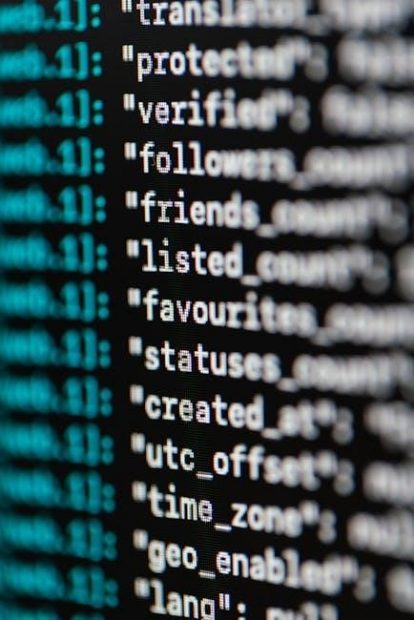Ultrasound-guided breast biopsy is a precise diagnostic tool using CPT code 19083, ensuring accurate tissue sampling and effective diagnosis of breast abnormalities, enhancing patient care and outcomes․
1․1 Overview of CPT Codes in Medical Billing
CPT (Current Procedural Terminology) codes are standardized codes used to report medical, surgical, and diagnostic procedures to entities like physicians, health insurance companies, and accreditation organizations․ These codes ensure uniformity in billing and insurance claims, facilitating accurate reimbursement and data collection․ In the context of ultrasound-guided breast biopsy, CPT codes like 19083 and 76942 are essential for documenting procedures, ensuring precise billing, and maintaining compliance with medical coding standards․ Accurate CPT coding is critical for healthcare providers to receive proper reimbursement and for maintaining reliable medical records․
1;2 Importance of Ultrasound-Guided Breast Biopsy in Diagnostics
Ultrasound-guided breast biopsy is a critical diagnostic tool for evaluating suspicious breast lesions, offering real-time imaging for precise tissue sampling․ This method enhances diagnostic accuracy, reducing the need for repeat procedures․ It is particularly valuable for assessing lesions that are difficult to palpate or visualize through other imaging modalities․ The use of ultrasound guidance minimizes complications and improves patient comfort, making it a preferred choice for both physicians and patients․ Its effectiveness in obtaining reliable biopsy samples aids in timely diagnosis and appropriate treatment planning, ultimately improving patient outcomes․

Understanding the Procedure and CPT Code 19083
CPT code 19083 specifies an ultrasound-guided core needle breast biopsy, involving imaging guidance for precise tissue sampling from a single lesion, ensuring accurate diagnostic results․
2․1 Definition of Ultrasound-Guided Breast Biopsy
An ultrasound-guided breast biopsy is a minimally invasive procedure using real-time ultrasound imaging to precisely locate and sample breast tissue for diagnostic evaluation․ This technique ensures accurate targeting of abnormalities, such as lesions or masses, while minimizing discomfort and scarring․ It is commonly performed under local anesthesia, with the ultrasound providing visual guidance for the needle placement․ The procedure is essential for diagnosing breast conditions, including cancer, and is valued for its precision and patient-friendly approach compared to more invasive methods․
2․2 Key Features of CPT Code 19083
CPT code 19083 specifically refers to a core needle biopsy of the breast guided by ultrasound․ It is distinct from non-image-guided biopsies, emphasizing the use of real-time ultrasound imaging for precise tissue sampling․ This code applies to a single lesion and is not bilateral unless specified․ It includes imaging guidance, needle placement, and specimen collection․ Additional lesions require separate coding․ The code is crucial for accurate billing and ensures proper reimbursement for ultrasound-guided procedures, distinguishing it from other biopsy methods like stereotactic or vacuum-assisted techniques;

Types of Breast Biopsy Procedures
Breast biopsy procedures vary, including image-guided and non-image-guided methods․ Common types include core needle, fine needle aspiration, and vacuum-assisted biopsies, each with specific indications and techniques․
3;1 Image-Guided vs․ Non-Image-Guided Biopsies
Image-guided biopsies, such as ultrasound-guided procedures, utilize real-time imaging to accurately target lesions, ensuring precise tissue sampling․ Non-image-guided biopsies rely solely on clinical examination or palpation, lacking the same level of precision․ Image-guided methods, like those using CPT code 19083, reduce complications and improve diagnostic accuracy, making them the preferred choice for complex or non-palpable lesions․ This approach enhances patient outcomes by minimizing procedural risks and ensuring accurate results, which are critical for effective breast cancer diagnosis and treatment planning․
3․2 Ultrasound-Guided vs․ Stereotactic Breast Biopsy
Ultrasound-guided breast biopsy (CPT code 19083) offers real-time imaging, enhancing precision for superficial lesions․ Stereotactic biopsy uses mammography guidance, ideal for deeper or non-palpable lesions․ Both methods ensure accurate tissue sampling but differ in imaging technology and procedural approach․ Ultrasound-guided biopsies are often faster and more patient-friendly, while stereotactic biopsies may require additional radiation and time․ Choosing between them depends on lesion characteristics and patient-specific factors, ensuring optimal diagnostic outcomes for breast cancer detection and management․

Coding Guidelines for Ultrasound-Guided Breast Biopsy
Accurate coding requires reporting primary lesion with CPT 19083 and additional lesions separately, ensuring compliance with billing standards for precise reimbursement and documentation․
4․1 Reporting the Primary Lesion
Reporting the primary lesion in an ultrasound-guided breast biopsy involves using CPT code 19083 for the initial lesion․ This code is specific to the first lesion biopsied under ultrasound guidance․ When multiple lesions are present, the primary lesion is coded with 19083, while additional lesions require separate reporting using the appropriate codes․ Accurate documentation of the primary lesion’s location and characteristics is essential for proper coding․ This ensures compliance with billing guidelines and avoids reimbursement issues․ Bilateral biopsies are coded separately for each breast, maintaining clarity in the procedure’s documentation and billing process․
4․2 Coding for Additional Lesions
For additional lesions beyond the primary, separate coding is required․ CPT code 19083 is used for the first lesion, while subsequent lesions are reported with distinct codes․ For example, if a second lesion is biopsied in the same breast, CPT code 19084 may apply․ Ultrasound guidance for additional lesions is reported separately using CPT code 76942․ Bilateral biopsies require coding each breast individually, ensuring accurate documentation of each procedure․ Proper coding ensures compliance with guidelines and prevents reimbursement issues, emphasizing the importance of clear lesion differentiation in documentation․

CPT Codes for Breast Biopsy Procedures
CPT codes for breast biopsy include 19081, 19083, 19085, and 76942, covering core needle, ultrasound-guided, vacuum-assisted, and ultrasound guidance procedures, ensuring precise billing and compliance․
5․1 CPT Code 19081: Core Needle Biopsy
CPT code 19081 refers to a core needle biopsy of the breast without imaging guidance․ This procedure involves removing a cylindrical sample of tissue for pathological examination․ It is commonly used to diagnose breast abnormalities, such as palpable masses or suspicious lesions․ Unlike ultrasound-guided biopsies, this code does not include imaging guidance, making it a standalone procedure․ The code is reported per lesion, with additional lesions requiring separate reporting․ It is essential for accurate billing and ensures proper reimbursement for this diagnostic service․
5․2 CPT Code 19083: Ultrasound-Guided Core Needle Biopsy
CPT code 19083 is used for an ultrasound-guided core needle biopsy of the breast․ This procedure involves using ultrasound imaging to guide the needle during tissue sampling, ensuring precise targeting of breast lesions․ It is typically performed on a single lesion and is billed as a standalone service․ The code covers the imaging guidance and the biopsy itself, making it a comprehensive option for diagnostic purposes․ Accurate reporting of this code is essential for proper reimbursement and reflects the use of advanced imaging in modern breast biopsy practices․
5․3 CPT Code 19085: Vacuum-Assisted Biopsy
CPT code 19085 pertains to a vacuum-assisted core needle biopsy of the breast, a procedure often used for larger or complex lesions․ This method employs a vacuum-powered device to remove additional tissue samples after an initial core biopsy, enhancing diagnostic accuracy․ It is frequently used when further tissue analysis is required․ The code is billed separately and applies to each breast lesion biopsied․ Unlike 19083, it is not limited to ultrasound guidance and may also be performed stereotactically․ Proper documentation is essential to ensure accurate reimbursement for this procedure․
5․4 CPT Code 76942: Ultrasound Guidance for Biopsy
CPT code 76942 is specifically used to report ultrasound guidance for needle placement during breast biopsy procedures․ This code is billed separately and applies when imaging guidance is provided for the biopsy․ It is an add-on code, meaning it cannot be reported without a primary procedure code such as 19083 or 19085․ The code accounts for the ultrasound imaging expertise required to accurately guide the biopsy needle to the target lesion․ Proper documentation of the imaging guidance is essential for accurate reimbursement․ This code reflects the importance of imaging in ensuring precise and effective tissue sampling․ It is a critical component in the billing process for ultrasound-guided biopsies․
Reimbursement and Billing Considerations
Accurate coding ensures proper Medicare and insurance reimbursement for ultrasound-guided breast biopsies․ Understanding billing guidelines is crucial for avoiding claim denials and optimizing payment for medical services provided․
6․1 Medicare Reimbursement for CPT Code 19083
Medicare reimbursement for CPT code 19083 varies based on geographic location and practice costs․ The average global fee for ultrasound-guided breast biopsy is around $89․85, reflecting the procedure’s complexity․ Accurate coding and documentation are critical to ensure proper reimbursement․ Providers must adhere to Medicare’s billing guidelines to avoid claim denials․ The increasing demand for this procedure, with a projected market value of $1,090 million by 2032, highlights its growing importance in diagnostics․ Always refer to the latest Medicare fee schedules for precise reimbursement rates․
6․2 Billing for Bilateral Breast Biopsies
Billing for bilateral breast biopsies requires reporting separate CPT codes for each breast․ For ultrasound-guided procedures, CPT code 19083 is used for the first lesion, and 19084 for the second lesion in the contralateral breast․ Each lesion must be documented separately to ensure accurate reimbursement․ If multiple lesions are present in one breast, only the primary code is reported․ Bilateral procedures are billed with distinct codes to reflect the work performed on each side․ Proper documentation is essential to avoid claim denials and ensure correct payment for these procedures․

Clinical Applications of Ultrasound-Guided Breast Biopsy
Ultrasound-guided breast biopsy is crucial for diagnosing breast lesions, detecting cancer early, and monitoring high-risk patients, ensuring precise tissue sampling and effective patient care outcomes․
7․1 Diagnostic Use for Breast Lesions
Ultrasound-guided breast biopsy is essential for diagnosing breast lesions, providing precise tissue sampling under real-time imaging․ This technique ensures accurate diagnosis of suspicious masses, reducing diagnostic uncertainty․ It is particularly useful for non-palpable lesions, guiding the needle to the target with high accuracy․ The use of CPT code 19083 highlights its significance in medical billing for such procedures․ By combining imaging and biopsy, it streamlines the diagnostic process, enabling timely treatment decisions and improving patient outcomes․ This approach minimizes complications and enhances confidence in lesion assessment, making it a cornerstone in breast cancer diagnostics․
7․2 Role in Breast Cancer Screening
Ultrasound-guided breast biopsy plays a vital role in breast cancer screening by enabling early detection of abnormalities․ CPT code 19083 is used for this procedure, which combines imaging and tissue sampling․ It allows for the identification of suspicious lesions that may not be palpable, facilitating timely intervention․ This method is minimally invasive, reducing patient discomfort and recovery time․ Regular screening with ultrasound-guided biopsies can improve outcomes by catching cancer at an early stage․ It is an essential tool in the fight against breast cancer, promoting early diagnosis and effective treatment plans․
7․3 Use in Monitoring High-Risk Patients
Ultrasound-guided breast biopsy is crucial for monitoring high-risk patients, such as those with a family history of breast cancer or genetic predispositions․ CPT code 19083 facilitates accurate billing for this procedure․ Regular monitoring helps detect abnormalities early, reducing anxiety and improving outcomes․ This minimally invasive method provides precise tissue sampling, enabling timely intervention․ For high-risk individuals, ultrasound-guided biopsies offer a reliable and efficient way to assess breast health, ensuring early detection and effective management of potential issues․

Comparison with Other Biopsy Techniques
Ultrasound-guided breast biopsy (CPT 19083) offers real-time imaging, enhancing accuracy and reducing complications compared to other techniques, making it a preferred method for precise tissue sampling․
8․1 Fine Needle Aspiration (FNA) vs․ Core Needle Biopsy
Fine Needle Aspiration (FNA) and Core Needle Biopsy (CNB) are two common biopsy methods; FNA uses a thin needle to collect cells, while CNB uses a larger needle to obtain tissue cores․ FNA is less invasive but may yield limited diagnostic information, whereas CNB provides larger samples, improving diagnostic accuracy․ Ultrasound guidance enhances both procedures’ precision, but CNB is often preferred for assessing breast lesions due to its ability to provide more comprehensive tissue analysis, which is critical for accurate diagnosis and treatment planning․
8․2 Stereotactic vs․ Ultrasound-Guided Biopsy
Stereotactic and ultrasound-guided biopsies are both image-guided methods but differ in technique․ Stereotactic uses mammography to guide the needle, often for deeper or non-palpable lesions, while ultrasound offers real-time imaging for superficial lesions․ Ultrasound-guided biopsies are generally faster, less invasive, and more patient-friendly․ Stereotactic biopsies may require additional radiation and specialized equipment․ Both methods are coded separately, with CPT codes like 19083 for ultrasound-guided and 77012 for stereotactic guidance․ Each technique has distinct advantages, and the choice depends on lesion characteristics and patient needs, ensuring precise and effective tissue sampling for accurate diagnosis․

Market Trends and Future Directions
The ultrasound-guided breast biopsy market is expanding, driven by advanced technologies and rising demand for precise diagnostics․ Emerging innovations like AI and robotic systems promise enhanced accuracy and efficiency․
9․1 Growth of the Ultrasound-Guided Breast Biopsy Market
The ultrasound-guided breast biopsy market is poised for significant growth, projected to reach USD 1,090 million by 2032․ This expansion is driven by increasing demand for accurate diagnostics and technological advancements․ The rising prevalence of breast cancer and the need for non-invasive procedures further fuel market growth․ Emerging innovations, such as AI integration and robotic systems, are enhancing precision and efficiency, making ultrasound-guided biopsies more accessible and reliable․ These factors collectively contribute to the market’s robust growth trajectory, solidifying its role in modern healthcare diagnostics․
9․2 Emerging Technologies in Breast Biopsy
Emerging technologies are revolutionizing breast biopsy procedures, enhancing accuracy and patient care․ Advances include robotic-assisted systems, AI integration for real-time imaging analysis, and improved ultrasound guidance systems․ These innovations enable precise lesion targeting and minimally invasive procedures, reducing recovery time․ Additionally, the development of compact robotic biopsy devices integrated with advanced imaging systems is streamlining diagnostics․ Such technologies not only improve diagnostic capabilities but also enhance patient outcomes, making breast biopsies safer and more efficient․ These advancements are driving the future of breast cancer detection and treatment․

Examples of CPT Code Usage
Examples include unilateral or bilateral biopsies, with codes like 19083 for the initial lesion and 19084 for additional lesions in the same breast, ensuring accurate billing․
10․1 Single Lesion Biopsy
A single lesion biopsy involves using CPT code 19083 for an ultrasound-guided core needle biopsy of one breast lesion․ This code applies when only one lesion is sampled, ensuring precise diagnostic accuracy․ The procedure involves imaging guidance to locate the lesion, followed by tissue extraction for pathological examination․ Proper documentation must include the lesion’s location and confirmation of a single site․ Billing should reflect the use of 19083 without additional codes unless multiple lesions are present, adhering to coding guidelines for accurate reimbursement․
10․2 Multiple Lesions in the Same Breast
When multiple lesions are present in the same breast, CPT code 19083 is used for the first lesion, and 19084 is reported for each additional lesion․ This distinction ensures accurate billing for multiple biopsies․ The primary code (19083) covers the initial ultrasound-guided core needle biopsy, while 19084 is an add-on code for subsequent lesions sampled during the same procedure․ Proper documentation of each lesion’s location and separate sampling is critical to avoid coding errors and ensure correct reimbursement for multiple lesion biopsies in one breast․
10․3 Bilateral Breast Biopsy
Bilateral breast biopsy involves sampling lesions in both breasts․ For each breast, the primary CPT code 19083 is reported separately․ If additional lesions are present in either breast, CPT code 19084 is used for each extra lesion․ A bilateral procedure may require appending modifier 50 to indicate both breasts were treated․ Accurate documentation of each lesion’s location and the use of ultrasound guidance are essential for correct coding․ This ensures proper reimbursement for the procedure, reflecting the complexity of bilateral cases compared to unilateral biopsies․

Best Practices for Coding and Documentation
Best practices include accurate reporting, correct CPT code selection, proper use of modifiers, and thorough documentation to prevent coding errors and ensure compliance with guidelines․
11․1 Accurate Documentation of the Procedure
Accurate documentation is crucial for correct coding and billing․ Ensure all procedure details, including the number of lesions, laterality, and use of ultrasound guidance, are clearly recorded․ Documenting whether the biopsy was unilateral or bilateral is essential for assigning the appropriate CPT codes․ Note any additional procedures, such as placement of a localization device․ Proper documentation prevents coding errors and ensures compliance with billing guidelines, facilitating accurate reimbursement and maintaining precise patient records․ This attention to detail also supports legal compliance and enhances patient care continuity․
11․2 Avoiding Common Coding Mistakes
Common coding mistakes for ultrasound-guided breast biopsies often involve incorrect reporting of bilateral procedures or additional lesions․ Ensure proper use of modifiers and separate reporting for each lesion when applicable․ Avoid misreporting ultrasound guidance as a standalone service when it’s included in the primary CPT code․ Distinguish between core needle biopsy (CPT 19083) and fine needle aspiration (FNA) codes․ Stay updated on coding guidelines to prevent errors in reimbursement claims․ Accurate coding ensures compliance and avoids audit issues, optimizing financial outcomes and maintaining procedural integrity․
12․1 Summary of Key Points
The use of CPT code 19083 for ultrasound-guided breast biopsy ensures precise billing and documentation․ This code represents a core needle biopsy under ultrasound guidance, distinguishing it from other biopsy methods․ Accurate reporting requires understanding lesion specifics and additional codes like 76942 for guidance․ Proper documentation is crucial for reimbursement and compliance․ Staying updated on coding changes ensures efficient billing and reflects advancements in diagnostic techniques․ This approach enhances patient care by providing clear and standardized billing practices for breast biopsy procedures, ultimately improving diagnostic accuracy and treatment outcomes․
12․2 Importance of Staying Updated on CPT Codes
Staying updated on CPT codes is essential for accurate billing and compliance in medical practices․ Updates to codes like 19083 reflect advancements in ultrasound-guided breast biopsy techniques and reimbursement policies․ Failure to adhere to current codes can lead to billing errors, denied claims, or audits․ Regular updates ensure proper documentation, compliance, and optimal reimbursement; Practitioners must monitor AMA guidelines and coding changes to maintain efficiency and adapt to evolving diagnostic and therapeutic approaches in breast biopsy procedures, ultimately improving patient care and operational outcomes․
